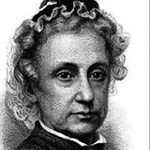 Most Christians are familiar with the inspirational story about Horatio Spafford, composer of the words to the hymn, “It Is Well With My Soul” (1873).
Most Christians are familiar with the inspirational story about Horatio Spafford, composer of the words to the hymn, “It Is Well With My Soul” (1873).
God allowed much tragedy in Mr. and Mrs. Spaffords’ lives and they lost their only son. Then they lost all of their possessions in the great Chicago Fire in 1871. In 1873 Horatio Spafford arranged a trip to Europe for his wife and daughters to help them recover from the tragedies. On the way the ship had an accident and all four of the Spafford daughters were drowned; only Mrs. Spafford survived.
On board the ship on the way to England to comfort his wife, Horatio Spafford penned the famous words, “When sorrow like sea billows roll; it is well, it is well with my soul.”
Later, Philip Bliss would be inspired by Horatio Spafford’s story and write the music to go with the poem. Millions of people have been comforted and inspired by this song.
Many people are also familiar with the hymn “More Love to Thee”. Not many know that it was written by a very godly Christian woman after the nearly fatal illness of her daughter. Like Horatio Spafford, this woman had suffered many tragedies in her life but always remained faithful to Christ. This woman was Elizabeth Payson Prentiss.
it was written by a very godly Christian woman after the nearly fatal illness of her daughter. Like Horatio Spafford, this woman had suffered many tragedies in her life but always remained faithful to Christ. This woman was Elizabeth Payson Prentiss.
More love to Thee, O Christ, more love to Thee!
Hear Thou the prayer I make on bended knee;
This is my earnest plea,
More love, O Christ, to Thee,
More love to Thee, more love to Thee!
 Elizabeth Payson Prentiss was born in Portland, Maine on October 26, 1818. She came from a long line of ministers including Edward Payson (early seventeenth century) who was married to Mary Eliot, the sister of the famous John Eliot, “Apostle to the Indians”. Elizabeth’s father, also named Edward Payson and mother Ann Louisa Shipman had eight children (only six survived); Elizabeth was the fifth child. She was a beautiful, slender, dark-eyed, and quiet yet observant young lady. It was said that no one could know her without loving her. All of her life she would put others before herself.
Elizabeth Payson Prentiss was born in Portland, Maine on October 26, 1818. She came from a long line of ministers including Edward Payson (early seventeenth century) who was married to Mary Eliot, the sister of the famous John Eliot, “Apostle to the Indians”. Elizabeth’s father, also named Edward Payson and mother Ann Louisa Shipman had eight children (only six survived); Elizabeth was the fifth child. She was a beautiful, slender, dark-eyed, and quiet yet observant young lady. It was said that no one could know her without loving her. All of her life she would put others before herself.
Elizabeth’s father died when she was barely nine years old. She grew close to her mother. When the family moved to New York Elizabeth contributed to the care of her mother through teaching. In May of 1831, Elizabeth made a public profession of faith in Christ and joined the church. She never did anything by halves; she dedicated her entire life to serving Christ by serving others.
Once earthly joy I craved, sought peace and rest;
Now Thee alone I seek; give what is best:
This all my prayer shall be,
More love, O Christ, to Thee,
More love to Thee, more love to Thee!
Elizabeth taught for several years in Richmond, Virginia. While she was away she carried on a correspondence with good friend Anna Prentiss. Anna’s brother George grew interested in Elizabeth. When the school closed in Richmond, Elizabeth moved back home and three weeks later she accepted George Prentiss’s proposal of marriage!
In 1845 George and Elizabeth settled in New Bedford, Massachusetts. George became the pastor of the South Trinitarian Church.
Elizabeth’s first child, Annie, was born in 1846. Twenty-one months later in 1848 Elizabeth had a baby boy, Edward Payson named after her late father. The joy of this baby was overshadowed by the death of Elizabeth’s mother only three weeks after Eddy’s birth.
Baby Eddy had many health issues including colic and sleeplessness. Elizabeth herself was plagued with sleeplessness and had to seek some rest. God blessed her with returning strength and she lovingly resumed her duties.
George was offered an associate pastorship at Mercer Street Presbyterian Church in New York City. The Prentisses moved there in 1851. This church was actively involved in mission work that thrilled the tender and caring heart of Elizabeth.
Early in 1852 Eddy succumbed to a severe illness (possibly meningitis). His suffering while dying was tremendous; the medical treatments at that time were painful and unhelpful. Elizabeth grieved tremendously. She was six months pregnant and had not recovered from her grief when her third child, Bessie (Elizabeth) was born.
Elizabeth was only to get some comfort from this newborn child for about a month. Then she noticed that something was seriously wrong. Elizabeth had a premonition that this child was going to die also. Little Bessie succumbed to a burning fever and died on May 19, 1852. Elizabeth was now left with “One child and two green graves.” Completely exhausted she went away for the summer with her remaining daughter, Annie and got some rest.
Elizabeth turned to writing for relief. She wrote many books, including one that is still popular today, “Stepping Heavenward”. She wrote a number of children’s books and she wrote poetry.
On July 23, 1854 Minnie was born. This child was often sick and fell seriously ill at age 18 months. The doctor told Elizabeth that Minnie was dying. Elizabeth stayed at Minnie’s side praying through the night and nursing her until Minnie finally pulled through.
Later in “Stepping Heavenward” she recalled, “Alas, my faith seemed, for a time, to flee, and I could see just what a poor, weak human being is without it. But before daylight crept into my room light from on high streamed into my heart, and I gave even this, my ewe lamb, away, as my free-will offering to God. Could I refuse Him my child because she was the very apple of my eye? No indeed …Could I not endure heart-sickness for Him who had given His only Son for me!” What joy in the morning when Minnie opened her eyes and gave her sweet smile to Elizabeth!
Her husband George thought that it was probably at this time that Elizabeth wrote the poem that would later became the famous hymn, “More Love to Thee”.
Let sorrow do its work, send grief or pain;
Sweet are Thy messengers, sweet their refrain,
When they can sing with me,
More love, O Christ, to Thee,
More love to Thee, more love to Thee!
Elizabeth had three more healthy children and published more books. Though a busy pastor’s wife who ministered to the needy in the congregation, Elizabeth put her own family’s needs first. Her heart ached for Eddie and Bessie, but she had much joy in her other children.
George suffered from failing health and the family moved to Europe for a time so he could rest. In 1860 they returned to New York where George took up his responsibilities again as pastor of the Mercer Street Church. He also held a chair and Union Theological Seminary.
Elizabeth was plagued off and on with severe health problems of her own. Once in 1873 she fell critically ill. She called her children to her bed thinking that the time had come when God was calling her home. She kissed them all good-bye but then recovered.
George and Elizabeth later settled in Dorset, Vermont. Elizabeth continued writing books until her last illness in 1878. She passed away on August 13, 1878 at fifty-nine years of age. A simple service took place the next day at her home. Family, friends, and neighbors all mourned this selfless woman who believed that this life is just a preparation for Heaven. Her hymn, “More Love to Thee” was sung at her funeral.
Then shall my latest breath whisper Thy praise;
This be the parting cry my heart shall raise,
This still its prayer shall be,
More love, O Christ, to Thee,
More love to Thee, more love to Thee!
Elizabeth Prentiss
The music for the words was provided by William Doane (1832-1915), composer of over 2000 hymns including many for Fanny Crosby.
For over one hundred and forty years Christians have been given hope by the words of Elizabeth Prentiss through her hymns and her writings. She truly lived for Christ and has inspired many to do the same.

